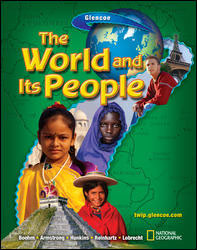The World and Its PeopleChapter 11:
Europe—Modern HistoryWeb Activity Lesson PlansIntroduction
In this chapter, students learned about events in the modern history of Europe, from the Industrial Revolution to two World Wars to widespread political and economic revolutions. After World War II, the United States and the Soviet Union filled the power gap left by the total defeat of Germany, Italy, and Japan. The United States and the Soviet Union engaged in a global competition called the Cold War. The Cold War lasted from the late 1940s to the early 1990s. In this activity, students will take a closer look at one symbol of the Cold War-the Berlin Wall. Lesson Description
Students will visit the Newseum Web site to explore a virtual exhibit about the Berlin Wall. They will learn why the wall was built, East and West Berliners' reactions to the wall, and the events that eventually brought the wall down. Students will then design drawings or words they might have used to decorate the wall were they residents of West Berlin during the period of separation. Instructional Objectives - Students will be able to summarize the events leading up to the construction of the Berlin Wall.
- Students will be able to describe ways that the people of East and West Berlin overcame obstacles presented by the wall.
Student Web Activity Answers - They built the wall to keep people in East Berlin from fleeing to democratic and capitalist West Berlin.
- They called it Schandmaur, or the "Wall of Shame."
- about 10,000; about 5,000; 246
- They learned about the West by listening to newscasts from Radio Free Europe, Radio in the American Sector, the British Broadcasting Corporation, and West German stations. Word of mouth, billboards, and smuggled fliers and papers were other means by which news was transmitted to the East Berliners.
- Students' designs will vary.
 | 




